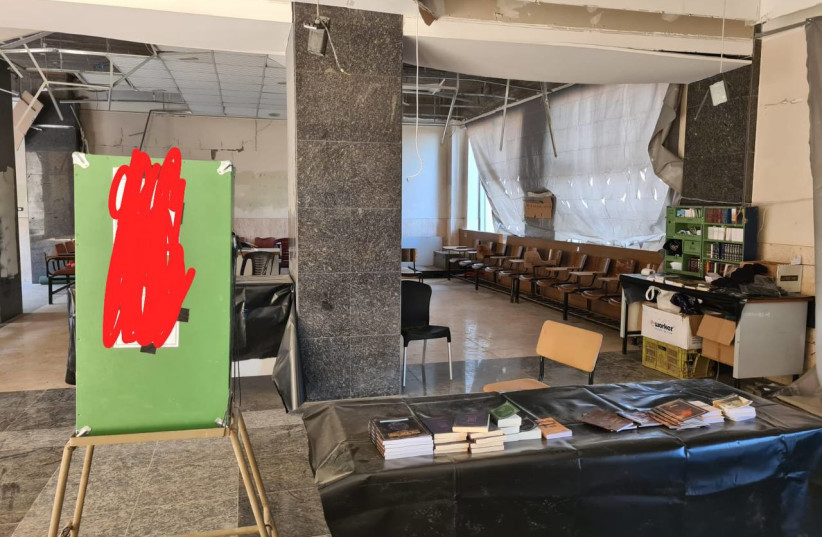IDF soldiers have established a synagogue in the heart of the Gaza Strip during the ground invasion, according to Walla.
The soldiers converted one of the buildings into a space for them to pray. They added benches and a table to place their prayer books.
According to the government press office's documentation, the synagogue was named Abraham Temple and it has a sign inside showing the times for prayer, which are updated daily.
IDF soldiers pray in ancient Gaza synagogue
In early November, IDF soldiers prayed in a 6th-century synagogue in Gaza, the first time in close to two decades that Jews was allowed to worship at this holy site.

The ancient synagogue of Gaza, dating back to 508 CE during the Byzantine period, was unearthed in 1965. Situated in what was once the bustling port city of Gaza, known as "Maiuma" or El Mineh (the harbor) at the time, this historical site now resides within the Rimal district of Gaza City. The Egyptian archaeologists initially identified it as a church, but a remarkable mosaic featuring King David playing a lyre, labeled in Hebrew, was subsequently found.
This mosaic, measuring three meters high and 1.9 meters wide, provided insight into the art and culture of the era. Curiously, it was first mistaken as depicting a female saint playing the harp but was later associated with Orpheus, a figure from Greek mythology, with ties to Jesus or David in Byzantine art.
Sadly, the main figure's face was damaged shortly after its discovery. Following Israel's capture of the Gaza Strip in the 1967 Six Day War, the mosaic was moved to the Israel Museum for restoration, where it remains a testament to the rich history of the region.
Nowadays, visitors can marvel at the mosaic floor of the synagogue in the Museum of the Good Samaritan, located near the Jerusalem-Jericho Road close to the Israeli settlement of Ma'ale Adumim. One of the most renowned panels on the mosaic floor portrays King David, identified by a Hebrew inscription reading "David," as he plays the lyre with a gathering of docile wild animals before him.
Zvika Klein contributed to this article.
